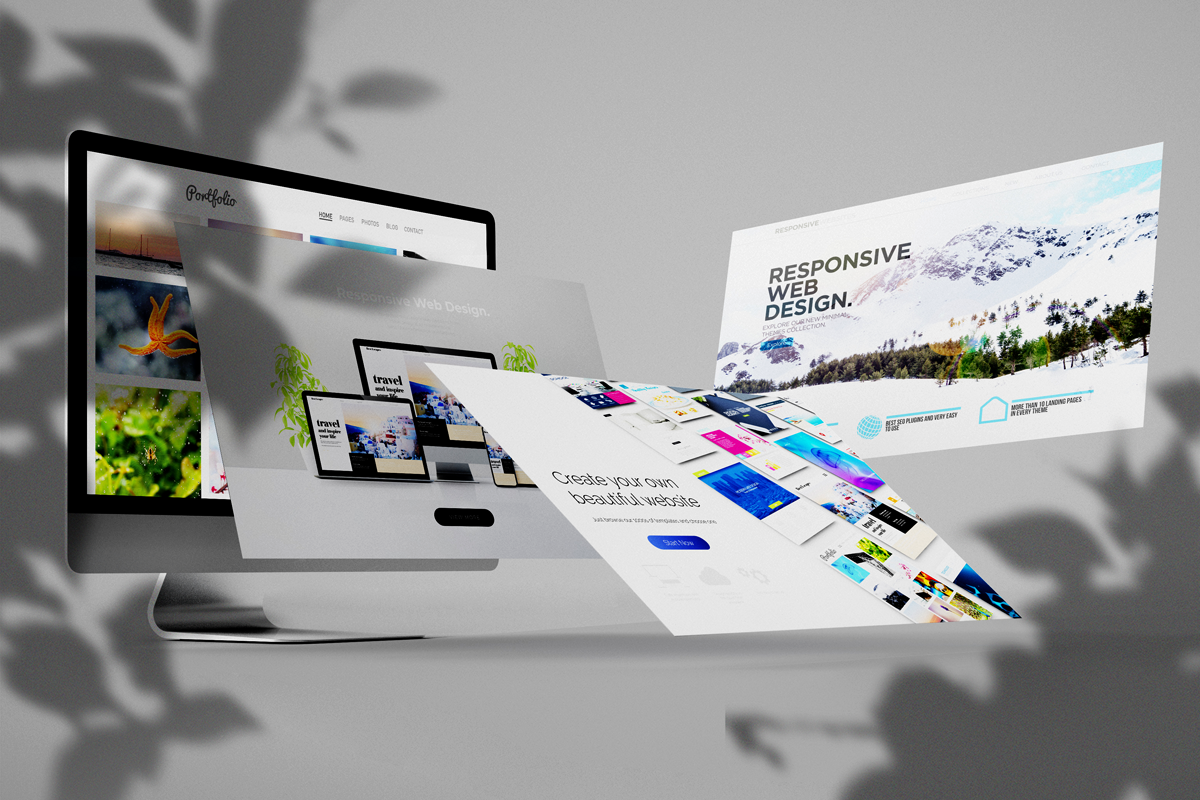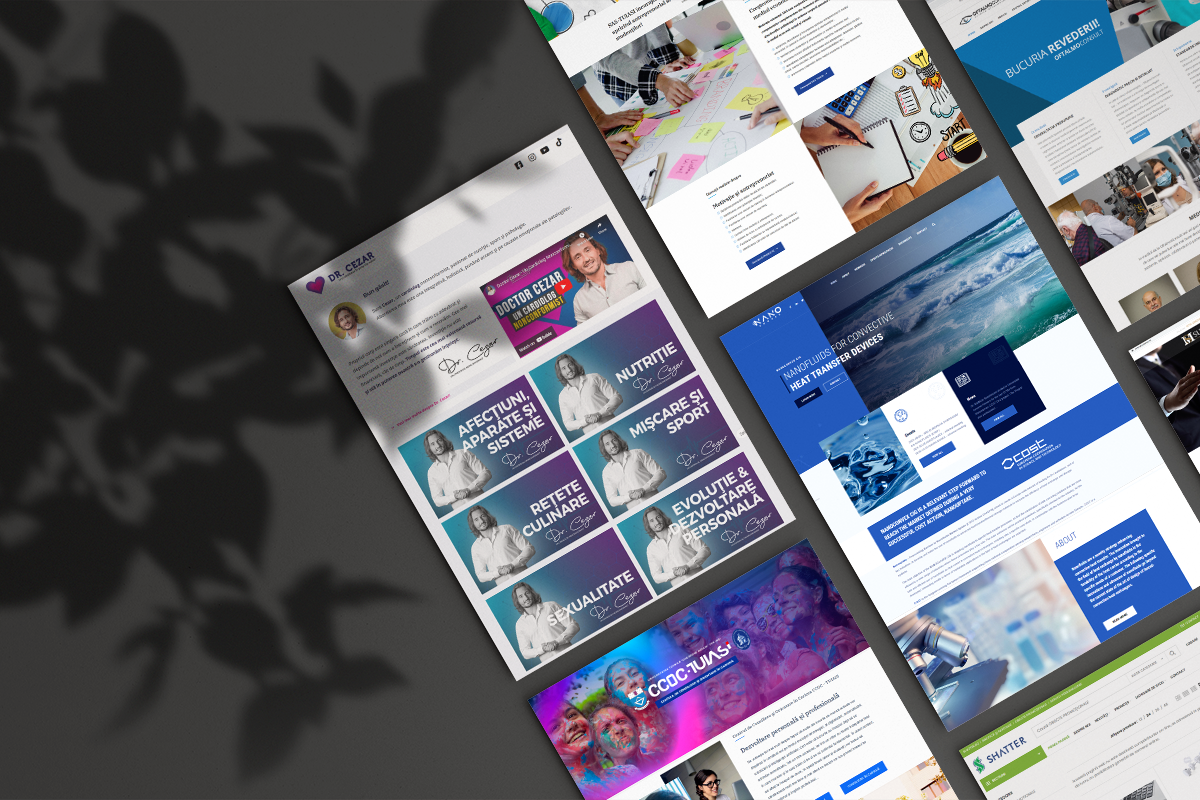What Does a Web Designer Do (and How Do I Become One)?

What Does a Web Designer Do (and How Do I Become One)? As a web designer, you are responsible for big-picture decisions, like the menus listed on the site, and smaller details, like which font, color, and graphics to use.
A web designer creates the layout and design of a website. In simple terms, a website designer makes a site look good. They use design programs to create visual elements. Website designers usually have expertise in UI, or user interface, which means they strategically design a site that’s intuitive and easy for visitors to navigate.
The aesthetics of a website directly impact a user’s opinion of the site and the company. Research shows it takes website visitors less than one second to judge a website, and that first impression is often associated with the brand as well. Seventy-five percent of consumers admit to judging a brand’s credibility based on its website, according to a research summary from the Stanford Persuasive Technology Lab.
As a result, companies are putting more emphasis on website design, and it’s reflected in the job market. Jobs in this field are growing 23 percent faster than the national average, according to the US Bureau of Labor Statistics.
For those exploring this job opportunity, there isn’t just growth in the field, but good wages as well. The median annual pay for a web designer in the US is $65,952 [3].
If your interest is piqued, let’s dig into this career and see what it takes to become a successful web designer.
Website developer vs. website designer
It’s common for a website designer to be confused with a website developer. A developer uses coding languages to create the framework of a website. They build the structure and then turn the site over to a designer to beautify it.
What does a website designer do on a daily basis?
Before talking about the skills or education needed, let’s uncover the daily tasks of a website designer so you can see if it’s something that suits your interests. Regularly, a website designer will:
- Design and layout websites
- Think through the navigation of a site to provide the best user experience
- Design sample pages and create mockups
- Work in Adobe programs to create visuals, graphics, or animations
- Register web domains
- Organize files
- Collaborate on website updates or “refreshes”
- Coordinate with writers and designers to create a site
What kind of skills should you develop to become a website designer?
If you’re interested in becoming a website designer, there are certain skills you can develop to start down this career path. Here’s a look at both workplace skills and technical skills that you can expand on:
Workplace skills
Communication
A designer needs the ability to talk with a company about what they want, ask questions about the intended audience, and convey their ideas for an effective site. Being able to communicate is just the start, companies want a responsive designer too. A responsive designer keeps a company informed, explains issues as they arise, and discusses deadlines.
Time management
As a web designer, you might decide to take a freelance approach where you work with a variety of different companies at once or you might work for one company. Either way, you’ll need the ability to manage your time effectively to keep multiple projects moving.
Collaboration
In many cases, a website designer works with other people to create a site. There could be a copywriter, graphic designer, or even members of an IT department participating in website creation. If that’s the case, you’ll need the ability to listen, collaborate, and take constructive criticism.
Technical skills
Visual design
The core part of a website designer’s job is to create visual elements for a site, so having a firm grasp of design principles is a must. Visual design incorporates a variety of best design practices that hone in on things like proportions, symmetry, typography, and color systems.
UX design
UX design, or user experience design, influences the way a person feels about visiting a site. A designer’s purpose is to create a layout that’s easy to navigate and visually pleasing, which results in a positive customer experience.
To generate the right experience for the audience, a designer often researches the audience and studies actions taken on the site to build a website experience that fits a brand’s target market.
Knowledge of design programs
Website designers must have proficiency in design programs like Adobe Creative Cloud, CorelDraw Graphics Suite, or Inkscape. These programs are often used to create visual elements, produce mock-ups, and manipulate images, all of which are needed in web design.
Some coding knowledge
A designer doesn’t write the code to make a site function, but it doesn’t hurt to know a little about HTML or CSS to make small tweaks to a site. With a basic understanding, you’ll be able to manipulate templates, enhance fonts, or adjust placements of objects easier.
Read more: Hard Skills vs. Soft Skills: What’s the Difference?
Do you need a degree to land a job as a website designer?
Many website designers have a bachelor’s degree in website design or a related field, according to the US Bureau of Labor Statistics. However, a four-year degree isn’t the only path to this creative career, obtaining certifications is another option. Let’s take a closer look at both degree programs and certifications.
Degree programs
There are four-year degree programs that can provide the necessary training to become a website designer. Here’s a look at a few options:
- Bachelor’s degree in computer science: A degree in computer science provides a well-rounded education in computing skills, problem-solving, and design work. Within some programs, like BSc Computer Science from the University of London, you can pick an area of focus, like user experience (UX), to narrow your skill set.
- Bachelor’s degree in website design: Some students decide to get a specific degree in website design, which has a more narrow focus on design skills and layout principles that are all taught in concert with the technical programs that website designers use, like the Adobe programs mentioned earlier.
Web Design Certificate Programs and Courses
Obtaining a bachelor’s degree isn’t the only option, you can also explore certification programs or take courses to build your web design skills. To help you explore options, here’s a look at a few courses available on Coursera:
- Google UX Design Professional Certificate: Learn from industry leaders at Google in this series of courses that cover foundational UX concepts. Build job-ready skills like wireframing, prototyping, and user research as you complete projects for your design portfolio.
- UI/UX Design Specialization: This series of courses from the California Institute of the Arts offers practical, skill-based instruction to help students understand the UI/UX development process, website architecture, site maps, wireframing, and best practices to create a delightful online experience for the end user.
- Responsive Website Development and Design Specialization: With a growing number of people using mobile devices to search online, understanding how to make responsive, mobile-ready websites is a valuable skill. This specialization from the University of London has students develop and design responsive sites with built-in multi-user experiences. While this class might lean more towards web development, an understanding of these skills will bolster your web design knowledge.
Web designer portfolio
With the right skills honed and the right educational background, securing a website designer job includes building an impressive online portfolio. To help, here’s a list of tips to curate the best examples possibilities:
- Quality over quantity: A portfolio should contain your best work, but it’s important to be selective. It’s better to showcase fewer, higher-quality sites than many sites that don’t showcase your best work.
- Highlight the kind of work you want to do: Is there a particular industry that you’d like to serve? Do you want to focus on creating online stores as opposed to single-page sites for small businesses? Your portfolio should include the kind of work you want to do and showcase examples that you’re passionate about creating.
- Provide context: Your portfolio is a visual representation of your best work, but it is also an opportunity to provide context about your impact and projects. Consider providing a quick three-to-four-sentence description that explains the site’s purpose, its challenges, and why it’s in your portfolio.
- Update it regularly: It’s a good idea to set aside scheduled time once a quarter to update your portfolio. Even if you are not adding new work, you might have additional context to add, or edits to make, based on your ongoing learnings and goals. It’s a lot easier to update when things are fresh in your mind versus months or years later.
Take the next step
Are you ready to take the next step toward building a career as a website designer? If so, consider Website Design For Everybody, offered by Michigan State University, and the Meta Front-End Developer Professional Certificate. In both courses, you’ll create a professional portfolio that you can use in your job search.

